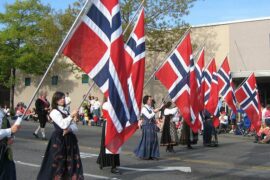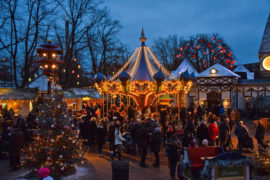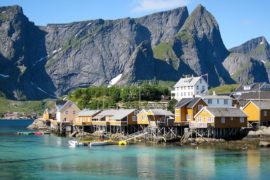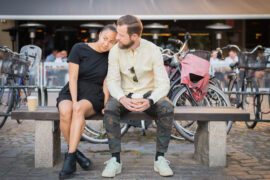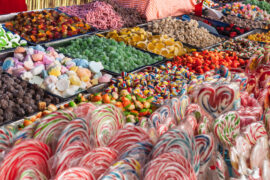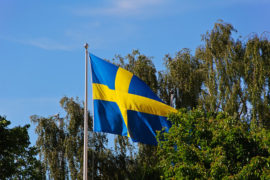You may have seen those captivating Scandinavian art pieces decorated with cute animals, bold colours and fun designs.
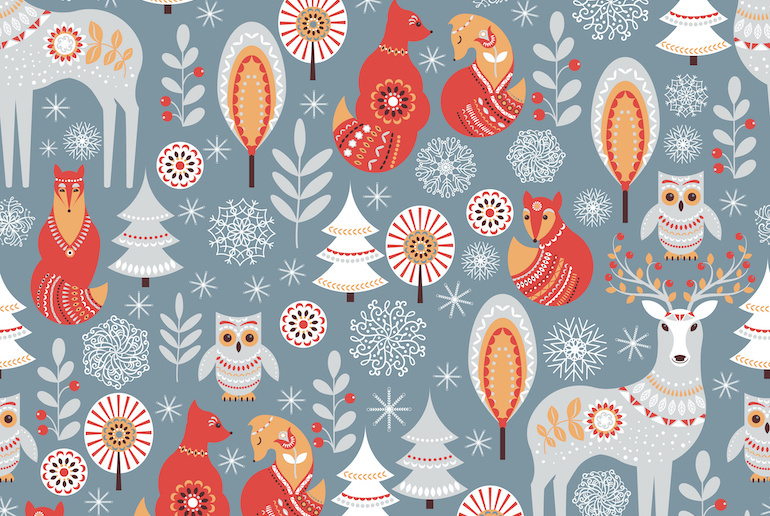
This is the traditional folk art of Scandinavia, and it is a rich and fascinating part of the region’s cultural heritage.
But do you know about the roots of this art form and how it became so popular?
What is Scandinavian folk art?
Scandinavian folk art is a unique form of cultural expression that comes from northern Europe, specifically Sweden, Denmark and Norway.
The art is characterised by vibrant colours, intricate patterns and imaginative themes which often feature depictions of nature, animals and folklore.
Scandinavian folk art is often considered a symbol of the region’s cultural history and has captivated audiences for generations with its beauty and ingenuity.
What does Scandinavian folk art usually look like?
Scandinavian folk art is quite particular in the sense that there are similar themes displayed in the pieces. Common elements of Scandinavian folk art include:
- Geometric designs and patterns, lines, dots, circles, stars, and diamonds
- Nature motifs, such as flowers, leaves and animals, particularly horses, birds and fish
- Bright, contrasting colours
- Symbols from folklore and mythologies
How ancient is Scandinavian folk art?
Scandinavian folk art has a long history, dating way back to the Viking Age. It’s said to have been influenced by traditional Nordic designs and mythologies.
Folk art was primarily made by rural craftsmen, who created functional and decorative objects for everyday use.
This included textiles, ceramics, wooden toys and household items.
In the 19th and early 20th centuries, there was a revival of traditional folk art, leading to new styles and techniques.
Today, Scandinavian folk art continues to be an important part of the region’s cultural heritage and is celebrated in various museums, exhibitions and festivals.
How does folk art vary from one Scandinavian country to another?
The origins and influences of folk art vary slightly from region to region and country to country.
But there are distinct features that typify the folk art of each of the Scandinavian countries.
Swedish folk art
Swedish folk art is known for its bright colours and whimsical designs, often incorporating playful scenes and motifs.
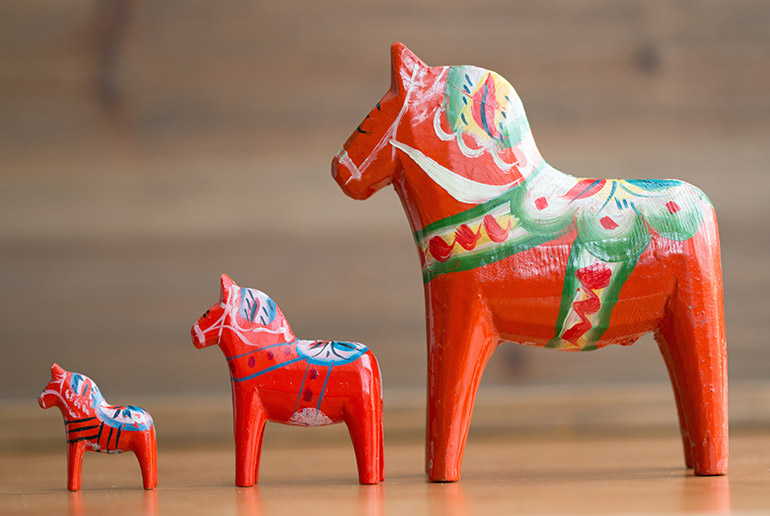
The most iconic symbol of Swedish folk art is the Dalahäst or Dala horse, so called because it originated in the Dalarna region of Sweden.
The Dalahäst is a carved wooden horse that comes in a variety of sizes and colours, though the original colour was red – it’s a very similar red to the one found on classic Swedish houses.
In touristy parts of Sweden, you will find the Dalahäst everywhere! It truly is a national icon.
Danish folk art
Folk art in Denmark is closely associated with the concept of hygge. There is no direct translation of the word, but hygge describes a feeling of comfort, cosiness and warmth.
In the context of Danish folk art, hygge is often achieved through the use of natural materials, soft lighting and warm colours.
For example, hand-knitted woollen blankets, hand-carved wooden candlesticks, and ceramic mugs with simple yet cheerful designs all evoke a sense of hygge.
The concept of hygge is an integral part of Danish culture and is reflected in the country’s folk art, which is designed to bring comfort, warmth and a sense of homeliness to everyday life.
Norwegian folk art
One of the most popular forms of folk art in Norway is called Rosemåling, or rose painting.
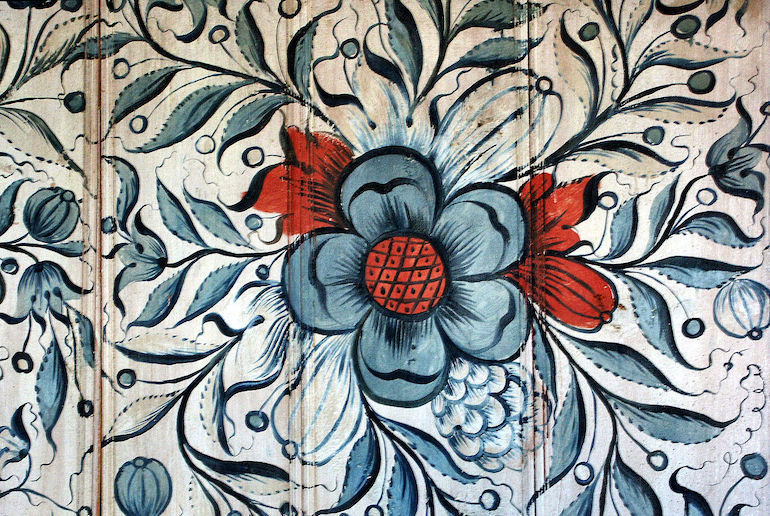
The brightly coloured floral designs were traditionally used to decorate wooden objects, furniture and household items, as well as in paintings.
The art of Rosemåling flourished in rural parts of Norway during the 1700s and is still practiced by traditional folk artists in Norway.
It’s considered a significant part of the country’s culture.
Folk art in other Nordic countries
The other Nordic countries also have their folk art traditions with recognisable styles and designs.
Finnish folk art
One of the major influences in Finnish folk art is the Kalevala, a collection of Finnish folklore, myths and legends.
The tales in the Kalevala have been an important source of inspiration for Finnish folk art for centuries.
For example, ceramics such as plates, cups and bowls may feature designs inspired by the stories and characters from the epic.
Icelandic folk art
In Iceland, one of the key aspects of folk art is its folk music. Although not something you can see in a museum, Icelandic folk music is one of the most important forms of folk art in Iceland.
Folk music in Iceland has been used for centuries to tell stories, convey cultural traditions and express the unique character of the country and its people.
Listen to it for yourself and experience the beauty and depth of Icelandic folk art through the music.
Greenlandic folk art
Folk art in Greenland is often expressed through clothes and costumes.
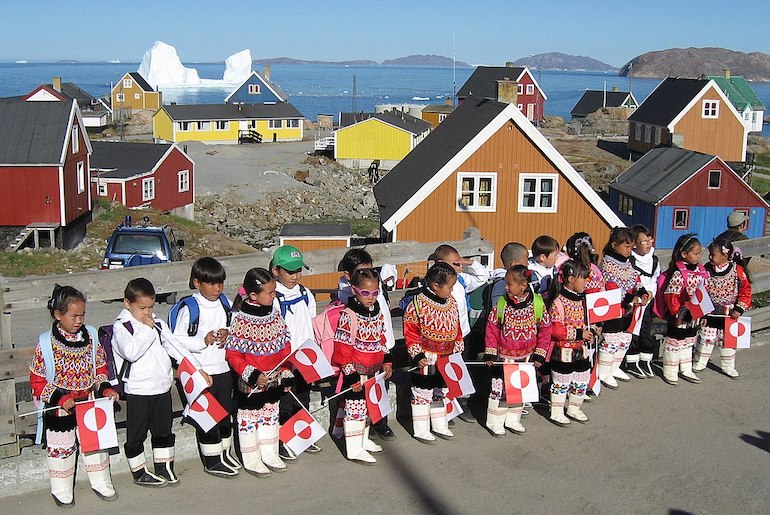
Traditional Greenlandic clothing is decorated with bright patterns and designs, as well as abstract shapes and symbols.
These designs often have cultural or spiritual meanings, and can also tell stories.
Even today, traditional Greenlandic clothing still plays an important part in the culture of Greenland, and it is often worn at various cultural events, such as festivals and celebrations.
How to draw Scandinavian folk art
Drawing Scandinavian folk may look easy, as the designs are rather simple and contain a lot of straightforward shapes.
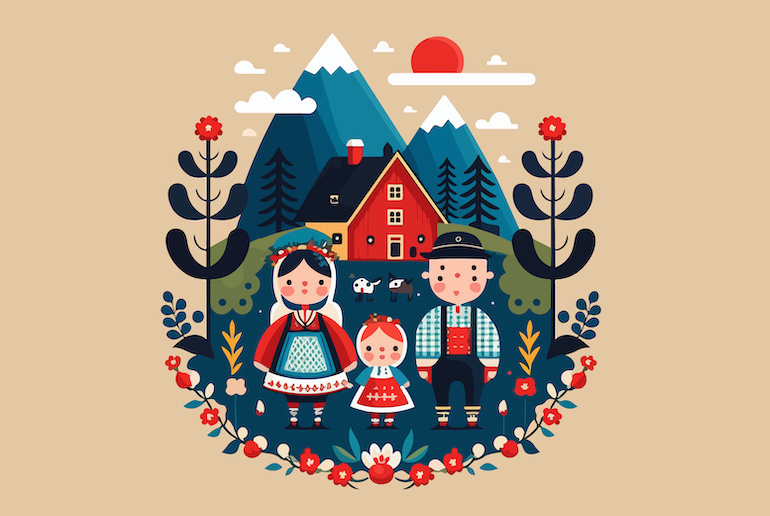
However, it is very tricky to master, as the lines and placement of the designs are very precise.
For those familiar with drawing digitally, specifically with Adobe Illustrator, this video provides a helpful insight into getting started.
And for those who prefer traditional paper and pencil, this video may be interesting to check out.
Where can you see traditional Scandinavian folk art?
There are several places throughout Scandinavia where you can see traditional Scandinavian folk, in particular museums, handicraft shops and festivals of culture.
Museums
Some of the best museums in Scandinavia to see traditional folk pieces include:
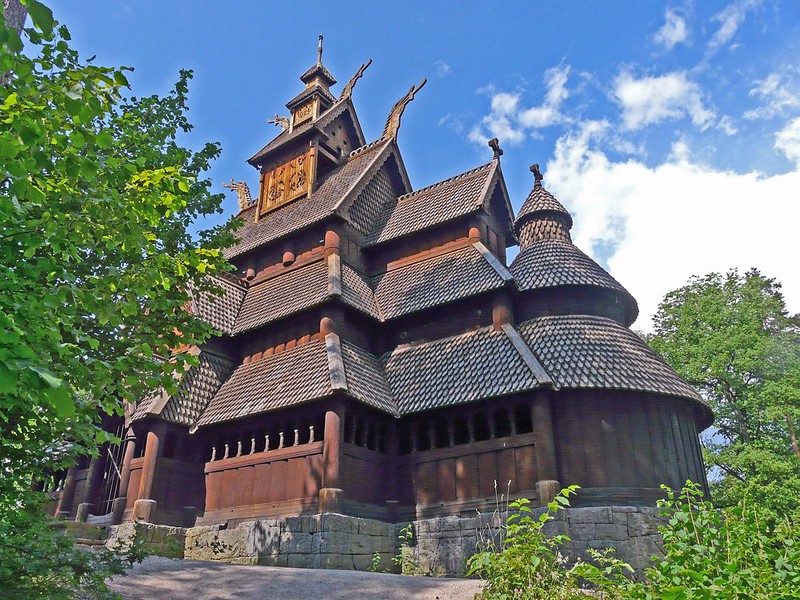
- Norsk Folkemuseum in Oslo, Norway: free to visit with the Oslo Pass.
- Nordic Museum in Stockholm, Sweden: admission included with the GoCity Stockholm pass.
- Skansen Open-Air Museum in Stockholm, Sweden: entrance included with the GoCity Stockholm pass.
- Dalarnas Museum in Falun, Sweden.
- Nationalmuseet in Copenhagen, Denmark: free to enter with the Copenhagen Card.
Handicraft shops
Handicraft shops specialising in traditional folk art can be found in rural areas and cities across Scandinavia.
Jokkmokk in Swedish Lapland is a particularly good place for handicraft shops that sell traditional Sami arts and crafts.
Cultural festivals
Scandinavian folk art is often showcased at cultural festivals and events, such as the Bergen International Festival in Norway, and during the Midsommar celebrations in Sweden.
Where can you see modern Scandinavian folk art?
The designs of Scandinavian folk art have been adopted by modern artists are used to adorn a variety of contemporary products, including:
- Hand-woven rugs, curtains and other textiles
- Wallpaper, posters and other forms of home decor
- Clothing and accessories, such as bags, hats and scarves
- Greetings cards, notepads and wrapping paper
- Home accessories like pillowcases, blankets, lamps, candleholders and vases
Where are some good places to buy Scandinavian folk art designs?
Online marketplaces such as Etsy, Redbubble, and Zazzle sell a huge range of Scandinavian folk art products, including vintage and contemporary pieces, from independent artists and designers.
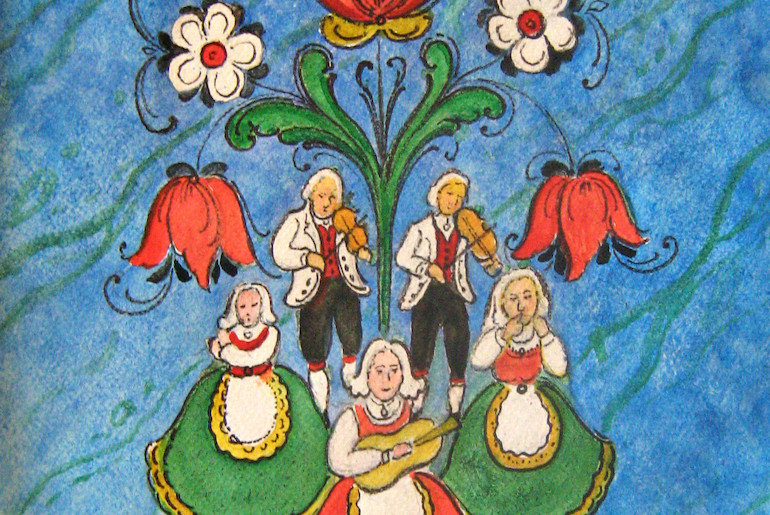
If you’re on a budget and are a fan of Swedish store IKEA, you are in luck!
It has a whole section of folksy-looking items, which bring a beautiful splash of colour to the more traditional, minimalist Scandi-style look .
What distinguishes Scandinavian art from Scandinavian folk art?
Scandinavian art and Scandinavian folk art are two distinct forms of artistic expression that have unique characteristics.
Scandinavian art refers to the visual arts produced in the Scandinavian countries.
This encompasses a wide range of styles and movements, from modern and contemporary art to traditional fine arts like painting and sculpture.
Scandinavian folk art, on the other hand, is the art that reflects the cultural heritage and everyday life of the Scandinavian people.
It is the traditional techniques and motifs that were used to represent the country, culture, mythologies and more.
See also:
All you need to know about Norwegian Rosemaling
Swedish souvenirs worth buying
The coollest Scandinavian Christmas decorations


